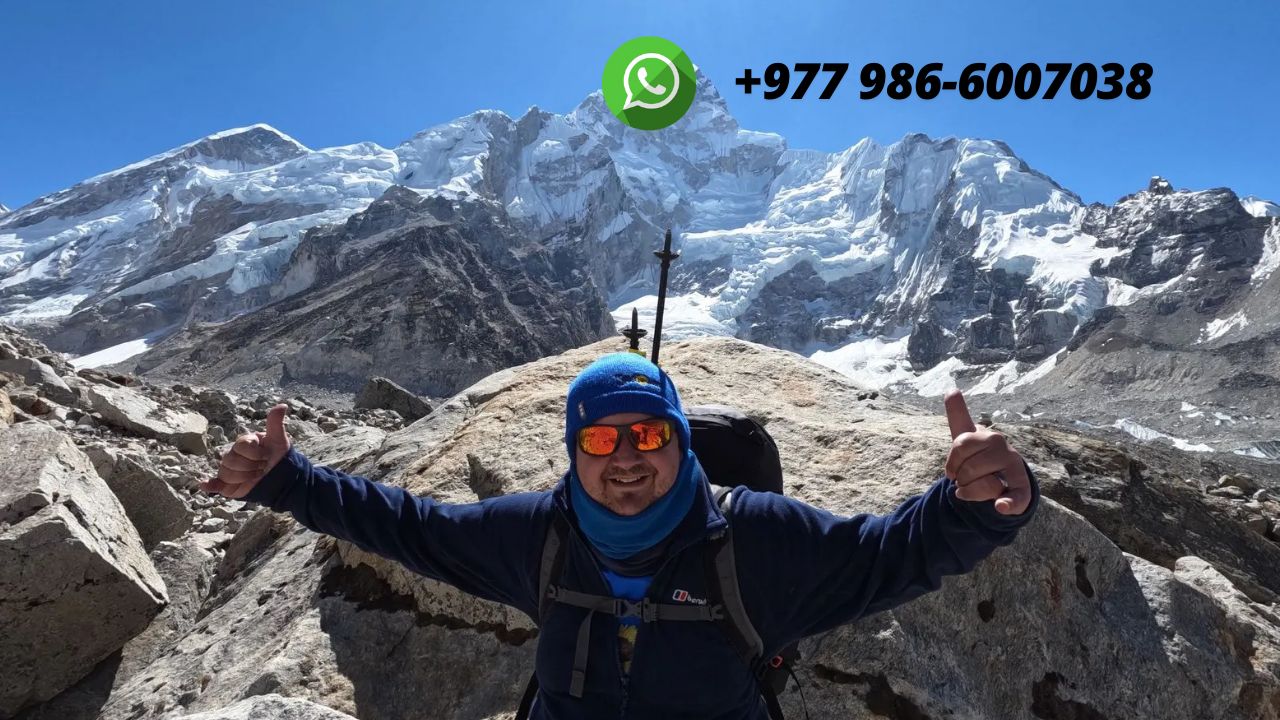The Everest Base Camp trek is one of the most iconic hiking adventures in the world. Nestled in the heart of Nepal, this trek offers breathtaking views of the highest peak on Earth, Mount Everest, and takes you through challenging terrain and unique cultural experiences. However, to successfully complete the trek, you need to prepare physically and mentally.
In this article, we’ll explore the essential Everest Base Camp trek training tips, along with other important aspects of the trek to help you reach the summit of your journey, no matter your experience level.
What is the Everest Base Camp Trek?
The Everest Base Camp trek is a challenging yet achievable journey for many adventure seekers. Located at an altitude of approximately 5,364 meters (17,598 feet), Everest Base Camp provides trekkers with stunning views of Mount Everest, the tallest mountain in the world.
The trek takes around 12-14 days, including acclimatization days, as trekkers ascend through Nepal’s Khumbu region. Along the way, trekkers traverse through quaint Sherpa villages, dense forests, and rugged alpine terrain, all while gaining insight into the rich Sherpa culture.
Why is Everest Base Camp Trek Training Important?
Training for the Everest Base Camp trek is critical for a number of reasons:
- Altitude: At altitudes above 3,500 meters (11,500 feet), the oxygen levels start to decrease, which can lead to altitude sickness. Proper physical conditioning ensures your body can better adapt to the thin air.
- Endurance: The trek is long and demanding, requiring you to hike for several hours each day on uneven, sometimes steep terrain.
- Mental Toughness: The challenges of the trek—such as physical exhaustion and weather changes—require strong mental resilience. Preparing yourself mentally is just as important as preparing physically.
Essential Everest Base Camp Trek Training Tips
1. Build Cardiovascular Endurance
One of the key aspects of Everest Base Camp trek training is building your cardiovascular fitness. The trek requires you to hike for long hours in varying terrain, and a strong heart and lungs are essential for success.
How to Train:
- Running: Running is a great way to build endurance. Aim to run three to four times per week, with a mix of short, high-intensity intervals and long, slow runs to mimic the trek’s varying terrain.
- Cycling: Cycling is a low-impact exercise that builds endurance and strengthens your legs, which will help on the ascents.
- Swimming: Swimming provides an excellent full-body workout and helps build cardiovascular stamina.
2. Strengthen Your Legs
During the trek, your legs will do most of the work, especially when tackling steep ascents and descents. Strong legs reduce fatigue and improve overall efficiency.
How to Train:
- Hill Walking/Climbing: If possible, walk or hike uphill with a loaded backpack to simulate the trekking conditions. Aim for 2-3 sessions per week.
- Leg Press and Squats: Incorporate leg exercises into your routine, such as squats, lunges, and step-ups, to build strength in your quads, hamstrings, and calves.
- Stair Climbing: If hiking hills isn’t possible, stair climbing can provide similar benefits. Try to do this while carrying a backpack to mimic the load you’ll be carrying.
3. Improve Your Core Strength
A strong core improves posture and balance, which is crucial for trekking on uneven ground. It also helps in reducing fatigue, preventing injury, and supporting your lungs and heart when hiking at altitude.
How to Train:
- Planks: Hold a plank position for 30-60 seconds, progressively increasing your time.
- Russian Twists: Sit on the floor, lean back slightly, and twist your torso from side to side while holding a weight.
- Leg Raises: Leg raises target your lower abs, which are essential for supporting your upper body.
4. Prepare for Altitude
Training at altitude is difficult for most, but that doesn’t mean you can’t prepare your body for the reduced oxygen levels of the Everest Base Camp trek. It’s vital to help your body adjust to higher elevations before you start the trek.
How to Train:
- Gradual Elevation: If you live in a low-altitude area, consider hiking or trekking at increasing elevations. Spending time at higher altitudes prior to your trek will help your body acclimatize.
- Altitude Simulators: Some training centers offer altitude simulators or masks that help you breathe with less oxygen, mimicking high-altitude conditions.
- Hiking with Weight: Carrying weight while hiking simulates the physical exertion that your body will experience at altitude, boosting stamina and endurance.
Nutrition and Hydration for the Everest Base Camp Trek
Alongside Everest Base Camp trek training, proper nutrition and hydration are essential for a successful trek. Fueling your body with the right foods and ensuring you stay hydrated will help you perform at your best.
Nutrition Tips:
- Complex Carbs: Foods like whole grains, oats, and brown rice provide steady energy throughout the day.
- Protein: Include lean proteins like chicken, fish, and beans to help build and repair muscles after strenuous activity.
- Healthy Fats: Nuts, seeds, and avocados are great sources of healthy fats to keep you full and energized.
- Vitamins and Minerals: Carry supplements like multivitamins to ensure you meet all your micronutrient needs. These will be especially important at high altitudes.
Hydration Tips:
- Water: Drink at least 2-3 liters of water per day during the trek to stay hydrated, particularly at high altitudes where dehydration can happen faster.
- Electrolytes: Consider using electrolyte tablets or powders to help maintain your electrolyte balance, particularly if you’re sweating heavily during the trek.
Mental Preparation for the Everest Base Camp Trek
The Everest Base Camp trek is not only a physical challenge but a mental one as well. You’ll face long days of walking, changing weather conditions, and sometimes difficult terrain. Mental toughness is crucial to completing the trek.
How to Train Mentally:
- Visualization: Picture yourself successfully completing the trek, envisioning the hard moments and how you will overcome them.
- Stay Positive: Focus on maintaining a positive attitude, even when you feel fatigued. Celebrate small victories along the way to keep your morale high.
- Meditation: Incorporating mindfulness or meditation into your routine can help you stay calm and collected during challenging times.
Key Equipment for the Everest Base Camp Trek
Having the right gear can make your journey safer and more comfortable. Below are some of the essential pieces of equipment for the Everest Base Camp trek.
Essential Gear:
- Backpack: A sturdy, comfortable backpack is crucial for carrying your essentials.
- Trekking Poles: These provide stability on rocky or uneven terrain and reduce strain on your knees.
- Clothing: Layering is key for the changing weather conditions. Wear moisture-wicking clothes and bring waterproof gear for rain and snow.
- Sleeping Bag: A high-quality sleeping bag that can handle temperatures as low as -10°C (14°F) is recommended.
- Footwear: Sturdy trekking boots are a must for comfort and protection during long days of walking.
How to Plan Your Everest Base Camp Trek
Planning your trek in advance ensures that everything goes smoothly once you arrive in Nepal. This includes choosing the best time to go, arranging permits, and selecting a trekking agency if needed.
Best Time to Trek:
- Spring (March to May): This is the most popular time for the trek, with moderate temperatures and clear skies.
- Autumn (September to November): Another peak season, offering great weather and clear views.
Permits:
To trek to Everest Base Camp, you will need to obtain two permits:
- Sagarmatha National Park Permit: Required for entering the park area.
- TIMS (Trekkers’ Information Management System) Card: This card is issued by the Nepal Tourism Board for trekkers.
Conclusion: Reach New Heights with Everest Base Camp Trek Training
Preparing for the Everest Base Camp trek requires time, commitment, and a well-rounded approach that includes physical training, mental conditioning, and proper equipment. By building your cardiovascular fitness, strengthening your legs and core, training for altitude, and maintaining proper nutrition and hydration, you’ll be well on your way to achieving this incredible milestone.
Whether you’re an experienced hiker or a beginner, with proper preparation, you can successfully trek to Everest Base Camp and experience the magic of the Himalayas up close. Stay dedicated, plan ahead, and take it one step at a time—your adventure awaits!
Recomended Articles
Sublimation Tree Skirts: The Ultimate Guide
Ship Shape Pressure Wash: Your Complete Guide to Professional Cleaning
The Ultimate Guide to XD11 Yonex: Everything You Need to Know
Furniture Transfers Rub On: The Ultimate Guide to Transforming Your Furniture


























Leave a Reply